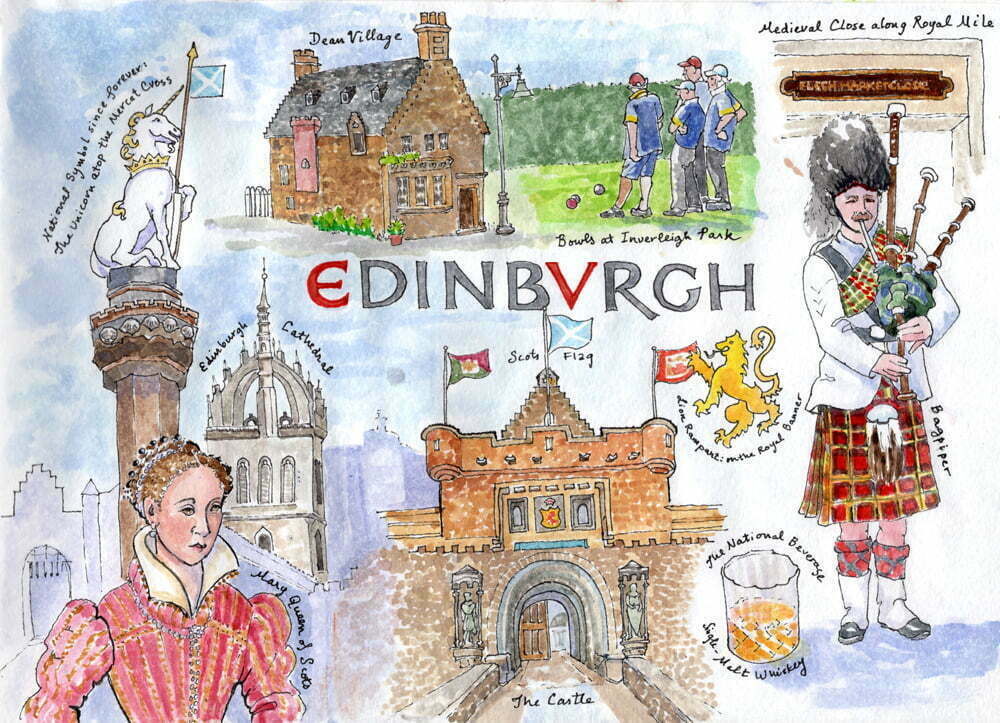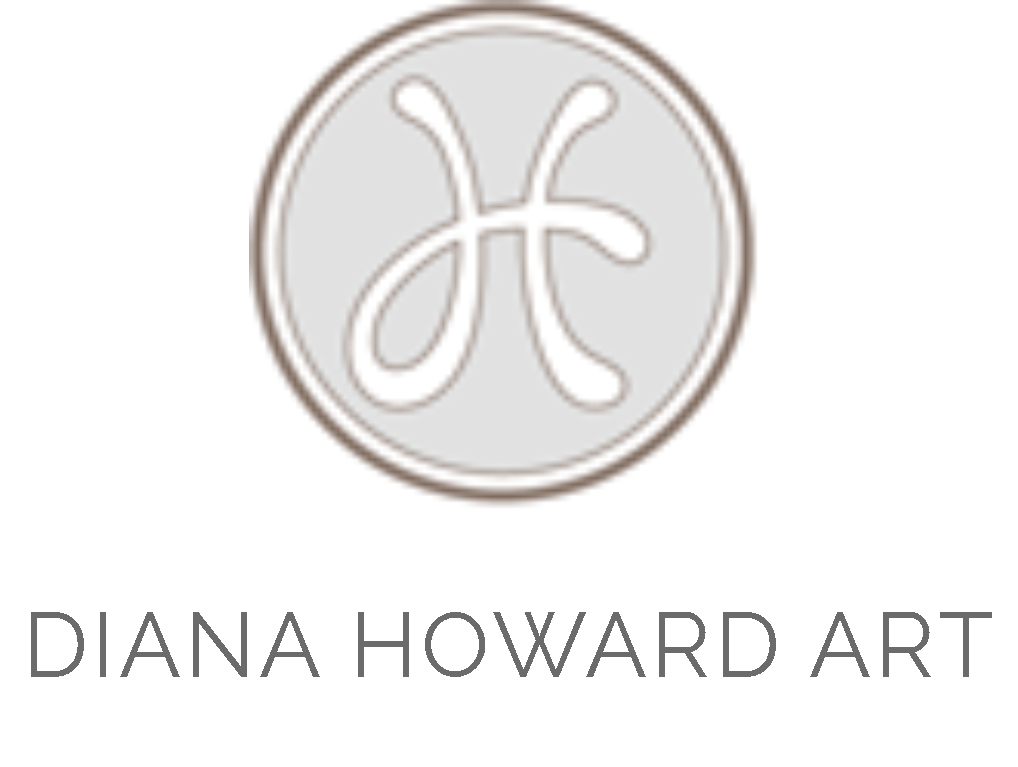
I managed to escape the terrible heat wave of 2022 by flying up to Scotland. I won’t fill this post with commentary on the challenges of travel this summer; just acknowledging it here.
The first thing I experienced was the prolonged daylight up here. Sun rises before 5:00 and it’s still light at 11:00 pm. And they don’t use shutters in this country.
I stayed in Edinburgh for a couple of days on either end of my stay in Scotland. The city is mostly made of greyish sandstone, which gives the town an austere aspect. I took a helpful tour down the Royal Mile (the wide medieval street reaching from Edinburgh castle down to Hollyrood Palace) with Mercat walking tours. The street was so jammed with tourists, buskers and souvenir shops, I wouldn’t have been able to appreciate it otherwise.
The Old Town is shaped like the a fish skeleton (hence “Gussie Haddie“); the spine defined by the Royal Mile, with “closes” (Scottish for alleyway) and wynds branching off perpendicularly and downward off the ridge. Tall (up to 14 stories) medieval housing ran along these narrow streets. Their sewage also flowed down those alleyways, to land in what is now a beautiful and lush (guess why) Princes’ Street Gardens at the foot of the castle.
The city grew beyond the capacity of the protective walls, and in the 18th century (when there was less need for protection anyway) an entirely “New Town” was constructed, with handsome Georgian buildings, wide avenues, and the first urban grid system. I enjoyed an elegant cream tea with my family there.
The cathedral, St. Giles, like all other cathedrals, is composed of an ancient heart (9th century) superimposed by more recent elements. I liked the lacy, open dome, which tops it.

For centuries, the people of Scotland (starting with the Picts, who managed to deflect the Roman army) were at war. In fact, their history is just one battle after another:
In the 6th century, the west coast was established as a Gaelic kingdom, with Christianity coming in via Ireland. The 8th century brought the Viking conquerors, which united the Picts and Gaels to create the kingdom of Scotland. Centuries of clan warfare ensued within the realm, eventually leading to its vulnerability to the growing strength of the English kingdom.
In the 13th and 14th centuries England and Scotland fought over the land, and finally Scotland managed to win independence until 1707, when the Kingdom of Great Britain swallowed up Scotland, Ireland and Wales. The wearing of kilts, speaking of Gaelic, playing of bagpipes became illegal as England squashed the Highland culture. Once the clans lost their power, clan culture became fashionable, mostly thanks to Sir Walter Scotts’ efforts.
In the 16th century poor Mary Queen of Scots played her doomed role in this squabbling between Protestant and Catholic, Tudor and Stuart competition. Elizabeth I, daughter of Henry VIII, a Tudor, could not allow the competing (and dangerous) claim Mary Stuart made on the crown, so she was dispatched; hence idolized in Scotland.
But the Stuart monarchs re-entered the scene once celibate Elizabeth died and they ruled both Scotland and England in the 17th century. Their Catholic religion made them unpopular to the extent of Charles I’s losing his head in the Civil War.
I wonder whether the historic antipathy between Scotland and England will lead to their divorcing. Certainly Brexit aggravated the rancor. Edinburgh’s National Museum houses interesting exhibits about the geology and history of the land. It was there that I discovered that 450 million years ago, the 2 Continental plates carrying what is now on the one hand, the east coast of North America with Northern Scotland, and on the other, England and Europe, collided. You can see the seam along Lochs Lochy and Ness, diagonally off Inverness. Maybe that Scottish sense of independence has deeper roots than issues of succession.
On my last day in Edinburgh I discovered a most pleasant neighborhood, Dean Village, a quaint 19th century addition to the town. The best part about it is a shady path along the Leith river, which leads to the Scottish National Gallery of Modern Art, housing excellent contemporary exhibits. Speaking of museums, I discovered a contemporary Scottish Highlands artist, Will MacLean at the City Art Centre. Like Joseph Cornell, he constructs pieces from found objects (usually old bits and pieces from his maritime heritage) integrated with his beautifully carved wooden elements.
Also at the Art Centre I was introduced to a collection by The Scottish Modern Arts Association, a group of pieces that show a unique Scottish perspective on 20th century art trends. Some of these paintings were a bit schmaltzy, but I enjoyed the beautiful depictions of dramatic Scottish landscapes.
I was surprised at the quality of artwork at the National Gallery— the town must have been wealthy at some point to be able to obtain pieces by Cranach, Titian, Van Dyck, Rembrandt, Sargent, Rafael, Velázquez and other gorgeous works.
I booked a tour with the Rabbies company to extract myself from the city and move up to the main reason for my trip: The isle of Skye and the Outer Hebrides of Lewis & Harris. You can read about it in Scotland II.

Diana, I so enjoyed this synopsis of your time in Edinburgh along with your beautiful illustrations. I love how you value-add with a brief history as well as explanations of the local vernacular – ‘Gussie Haddie’ and wynds sound so poetic to me. A lovely post. FD